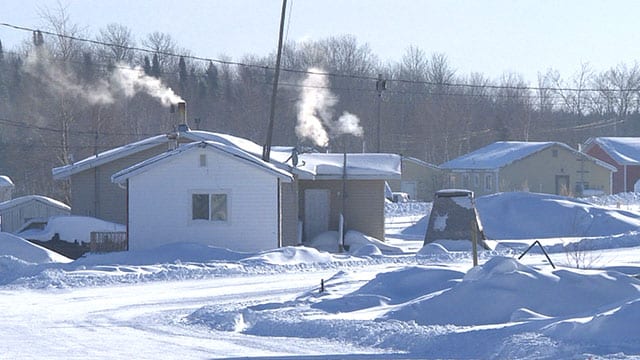
Canada and Ojibway leaders have reached an interim agreement on how to address the housing and health crisis at Cat Lake First Nation in northern Ontario.
After meeting with Cat Lake First Nation Chief Matthew Keewaykapow in Thunder Bay Thursday, Indigenous Services Minister Seamus O’Regan said Canada will build new houses in the community, repair others and provide portable units.
The announcement comes days after the death of a Cat Lake woman who is said to have had health complications related to living in a mould-infested house.
Nashie Oombash, 48, had left the community three weeks prior for medical services. She died in Thunder Bay on Monday. Family members have said they believe her death was related to living in a mould-infested house.
Her name was Nashie Oombash. She was only 48.
She was loved and she loved her grandchildren.
She was desperate to get out of the mould infested house that was making her sick.
She died this week. #catlake
What is it going to take Canada? pic.twitter.com/KbZsw7NrmF— Charlie Angus NDP () February 20, 2019
Cat Lake has been in the spotlight over the past two weeks after NDP MP Charlie Angus visited the community to shine light on the extent of the mould and health issues.
O’Regan called Thursday’s agreement an “interim framework agreement” and said Canada’s promise will be finalized within two weeks.
The interim agreement commits $3.5 million to build 15 new housing units in the community, $2.1 million to repair and renovate 21 existing units, and $2 million to deliver and install 10 “portable housing units for permanent use.”
Signed by Canada and the Windigo Tribal Council on behalf of Cat Lake First Nation, the agreement also includes funding for a housing manager to oversee maintenance of housing units, funding for a project manager and financial advisor to oversee implementation of the agreement.
Houses to be demolished and replaced with new units, and those that will receive repairs or renovations, have already been identified based in part on the results of an inspection report conducted by a third party contractor that assessed homes in the community last month.
That report identified 87 homes that need to be demolished due to mould infestation and other issues.
Keewaykapow said Thursday that the federal government’s plan won’t meet all of his people’s needs but that it’s “a start”.
The chief told APTN News during a visit to the community earlier this month that the number of homes found to have serious mould issues had climbed to 98.
He said at least 60 families are affected, and that the mould is having the greatest impact on children, elders and those already living with other illnesses and health conditions.

Photos have surfaced in recent weeks of community members, including children, with skin rashes reportedly due to mould in their homes. File photo.
Keewaykapow told APTN his community receives $240,000 a year to build three houses, “which means that the material we can afford with that is substandard.
“It just doesn’t do it,” he said.
The chief has said Cat Lake was considering applying for foreign aid, or evacuating the community altogether.
Thursday’s interim agreement says that a “Memorandum Agreement” will be signed in Cat Lake within two weeks.
The interim agreement indicates initial work to move materials into the community could begin within weeks, but the document does not indicate when houses will be built or renovated.
In a statement released Thursday afternoon O’Regan said that in addition to a recent visit to the community by a paediatric respirologist to assess and treat individuals, an infectious disease specialist visited the community this week “to further assess and treat patients as appropriate.
“We will be reviewing the results of the medical assessment when they are available, on an urgent basis,” O’Regan said. “Indigenous Services Canada has also increased the nursing staff in the community nursing station to provide additional supports.”
news.ca









